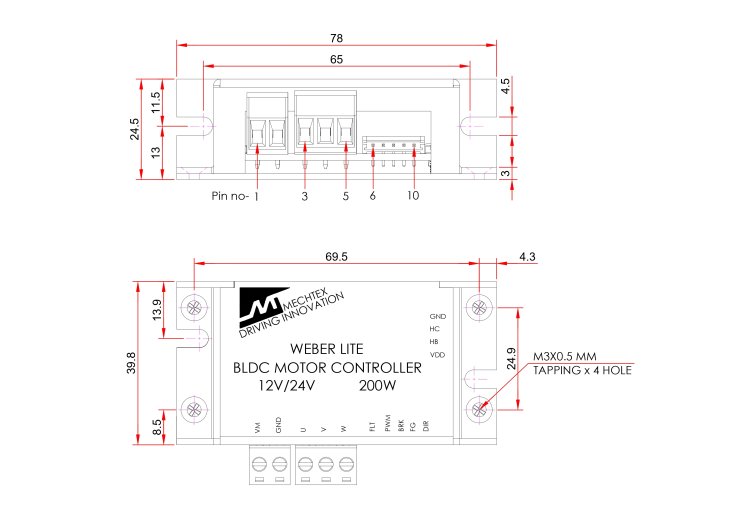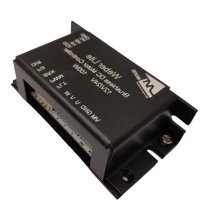Applications
- Suitable for a wide range of BLDC Motors.
- It can be used in various kinds of machines, such as laser cutters, laser markers, high-precision X-Y tables, labeling machines, and so on.
- Its unique features make the Weber Lite an ideal solution for applications that require both low-speed smoothness and high-speed performance
Description
Weber Lite is a BLDC motor driver that supports up to 8A of current. Available in both sensor and sensorless designs, it offers flexibility for various applications. This BLDC motor driver is compact, easy to use, and provides a one-stop solution for commercial and industrial-grade motors. The Weber Lite can be paired with BLDC motors as needed, ensuring optimal performance and reliability for various industries.
Standard Data
| Sensor-based design |
| Custom voltage and current configurations |
| Trapezoidal speed control using PWM |
| Protective features such as Over current, Over voltage, Under voltage protection, and Reverse polarity. |
| IEC 61000-4-2 compliance on request. |
Technical Data
Power Connection
| Pin # | Function | Description |
| 1 | VM | Input Voltage |
| 2 | GND | Supply Ground |
Phase Output
| Pin # | Function | Description |
| 3 | U | Motor Phase U |
| 4 | V | Motor Phase V |
| 5 | W | Motor Phase W |
Control Signal Connection
| Pin # | Function | Description |
| 6 | FLT | Fault Output |
| 7 | PWM | PWM for Speed Control |
| 8 | BRK | Brake Input |
| 9 | FGO | Frequency Generated Output |
| 10 | DIR | Direction control Input |
Hall Sensor Connection
| Pin # | Function | Description |
| 11 | VDD | Hall Sensor Voltage |
| 12 | HU | Hall Sensor 1 |
| 13 | HV | Hall Sensor 2 |
| 14 | HW | Hall Sensor 3 |
| 15 | GND | Ground |
Specification
Electrical Rating
| Supply voltage | 12 – 24 VDC | |
| Output Current (max) | 8A | |
| Output Power (max) | 200W | |
| Efficiency | 78% | |
Inputs & Outputs
| Control Input | PWM, DIR, BRK | |
| Hall sensor Input | HU, HV, HW | |
| Output | FGO & FLT | |
| PWM frequency | 20 – 30 kHz | |
| Voltage output for Hall sensor | Max. 7.8 VDC | |
| (IL ≤ 24 mA) | ||
Environmental Conditions
| Operating Temperature | -20 to 50 °C | |
| Storage Temperature | -40 to 150 °C | |
Connection Diagram







